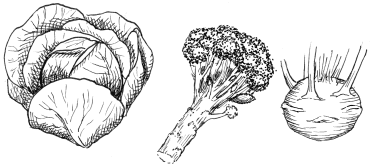Let’s start by discussing what is meant by the terms genus and species. An easy way
to remember these terms is to note that genus refers
to the "generic" name, and species refers
to the "specific" name. A genus is a
group of related plants. The similarity among members of a genus may or may not be
obvious. But taxonomists have determined that, due to certain features, these plants are
related and thus classify them in the same genus. Genus names are often derived from Latin
or Greek words, mythological figures, or plant characteristics.
The species name is the basic unit of classification. It
describes one kind of plant within the genus, and is almost always an adjective. By
itself, the species name is meaningless. For example, Digitalis purpurea is the
botanical name for foxglove, while Echinacea purpurea is the name for purple
coneflower. The species name, purpurea, indicates only that some part of the plant is
purple; by itself it gives no clue to the identity of the plant.
Just what criteria are used to separate out
individual species? This is a difficult question to answer precisely. Generally speaking,
a species is a type of plant having certain characteristics that differentiate it from
other members of the genus, and which retains these distinctions through successive
generations. Individuals of different plant species often cannot interbreed—though,
unlike for animals, this is not a reliable criterion for defining a species in the plant
world.
Information on the thousands of plant groups and
hundreds of thousands of species continues to accumulate. As a result, plant
classifications are sometimes modified to reflect new information about plant
relationships. In addition, it is often up to individual botanists to determine when a
group of plants is different enough from others in the genus to constitute designation as
a unique species.
Let’s look at one interesting plant species:
Brassica oleracea.
You’ve probably grown some of what are
commonly referred to as the brassicas—especially since this group of plants has been
in the news for its reputed health-promoting properties.
So, which type of brassica does Brassica oleracea
refer to? Broccoli? Cauliflower? Cabbage? Kale? Collards?
Well, the answer is "yes." All these
vegetables are classified under the same species name. They have common ancestry in a type
of wild mustard, and have been bred by horticulturists to the various forms they now have.
This brings us to an important point. If plant classification of wild plants is a
confusing matter, it is even more so with highly-bred, domesticated crop plants. Through
careful cross-breeding and selection, horticulturists have "created" all these
familiar vegetables from the same wild ancestor.


|
|
 A
rose by any other name?
Sometimes the meaning of a Latin name is fairly obvious, e.g. biennis means
biennial. However, there are many other not-so-obvious species names that apply to
familiar plants. Knowing their meaning can help you remember the name--and give you
a clue about some characteristics of the plant.
See the Appendix for a
list of Latin words frequently used in species names. |
|
|
|